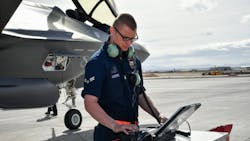Lockheed Martin launches cybersecurity strategy to safeguard weapons systems from malware attacks
WASHINGTON – As the military rushes to shore up cybersecurity on the F-35 and other high-tech weapons, Lockheed Martin rolled out a new cybersecurity initiative. Breaking Defense reports. Continue reading original article
The Military & Aerospace Electronics take:
14 Aug. 2019 -- Pooling best practices from across the company’s weapons programs, the effort includes a growing database with hundreds of requirements and metrics for assessing them, a step-by-step how-to guide for Lockheed cyber staff, and a trademarked Cyber Resiliency Level framework to sum it all up.
The 2016 National Defense Authorization Act required that all weapons begin to be assessed for cyber vulnerabilities, and the 2019 bill kept pressing the effort ahead. Breaking D readers know that Raytheon won contracts to ensure cyber safety for the F-15 and C-130 fleets. But implementing new cybersecurity standards is just the beginning of a much more complex process, Lockheed execs argue, a process in which their deep knowledge of specific weapons systems is vital.
Sure, countless companies combine to spend over a $100 billion a year in the U.S. alone on protecting computer networks. But securing the built-in electronics in a weapons system requires a distinctly different skill set, one where the aerospace titan — with over $50 billion in defense-related revenue last year — believes it has a competitive advantage.
John Keller, chief editor
Military & Aerospace Electronics

